#horror theory
Explore tagged Tumblr posts
Text
"The shift from the Afro-Caribbean zombie to the U.S. zombie is clear: in Caribbean folklore, people are scared of becoming zombies, whereas in U.S. narratives people are scared of zombies. This shift is significant because it maps the movement from the zombie as victim (Caribbean) to the zombie as an aggressive and terrifying monster who consumes human flesh (U.S.). In Haitian folklore, for instance, zombies do not physically threaten people; rather, the threat comes from the voduon practice whereby the sorcerer (master) subjugates the individual by robbing the victim of free will, language and cognition. The zombie is enslaved."
— Justin D. Edwards, "Mapping Tropical Gothic in the Americas" in Tropical Gothic in Literature and Culture.
Follow Diary of a Philosopher for more quotes!
32K notes
·
View notes
Text
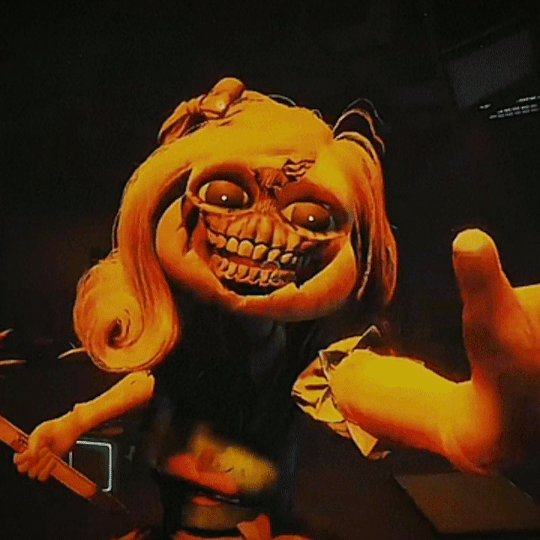
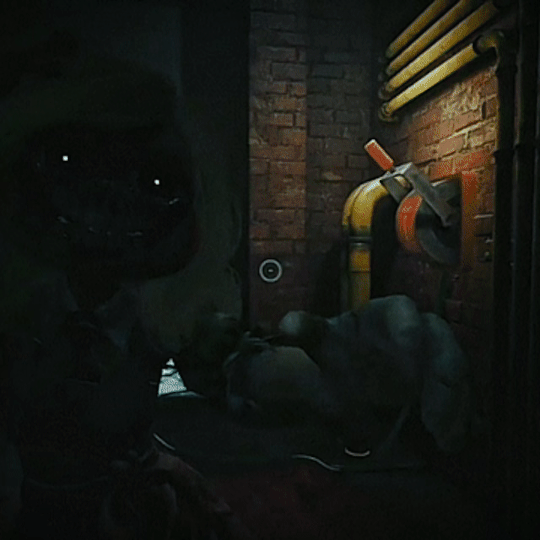


"The Prototype will save us."
DEEP SLEEP 2024 | Poppy Playtime: Chapter 3
#horror#indie horror#horror games#horror theory#gaming#poppy playtime#catnap#smiling critters#dogday#ms delight#huggy wuggy#poppy playtime chapter 3#my gifs
949 notes
·
View notes
Text
something I'm really taking from my Cinema Paranoia class is the concept that films not traditionally considered part of the horror genre can definitely be horror films
15 notes
·
View notes
Text
SMILE 2 ENDING THEORY
THE REEXPLANATION IS NOW POSTED ON MY ACCOUNT GO CHECK IT OUT

Smile 2 has officially been released on digital and since now it is on digital let’s talk about the confusing ending and how I and others think Skye Riley got on stage.

Before the movie came out Parker Finn and Naomi Scott did say in interviews that the audience will be left confused at the end and they were right because after watching the movie my jaw dropped at the end, left confused, and was trying to think how the hell she got there.
Recap of what happened before she got on stage.










Now here's the theory, a few days after watching the movie I was looking back at the first teaser that they released on Interscope Records YT account and it was when the marketing was first beginning and it was released on June 13, 2024.
youtube
and billboards promoting her and the song 'Blood On White Satin' with a qr code back in June.


PopCrave tweet promoting.
Another video talking about Skye.
youtube
And the famous skyerileynation account.



now ofc there were people thinking that this was a industry plant since people didn't know who Skye was or even knew Smile 2 was happening and I knew this was for the movie and i thought this was genius.
Also i just want to say I don't think many people know this but when Naomi Scott was casted to play Skye on the IMDB page for the movie her name was put as Quinn Parsons.
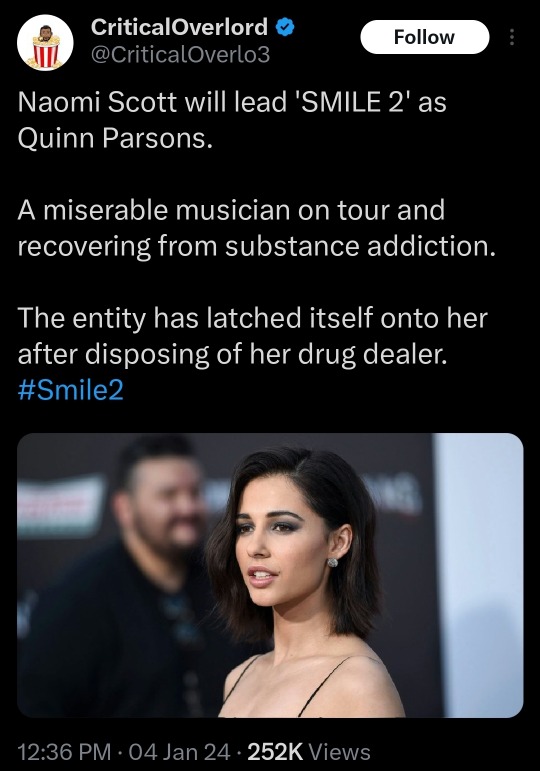
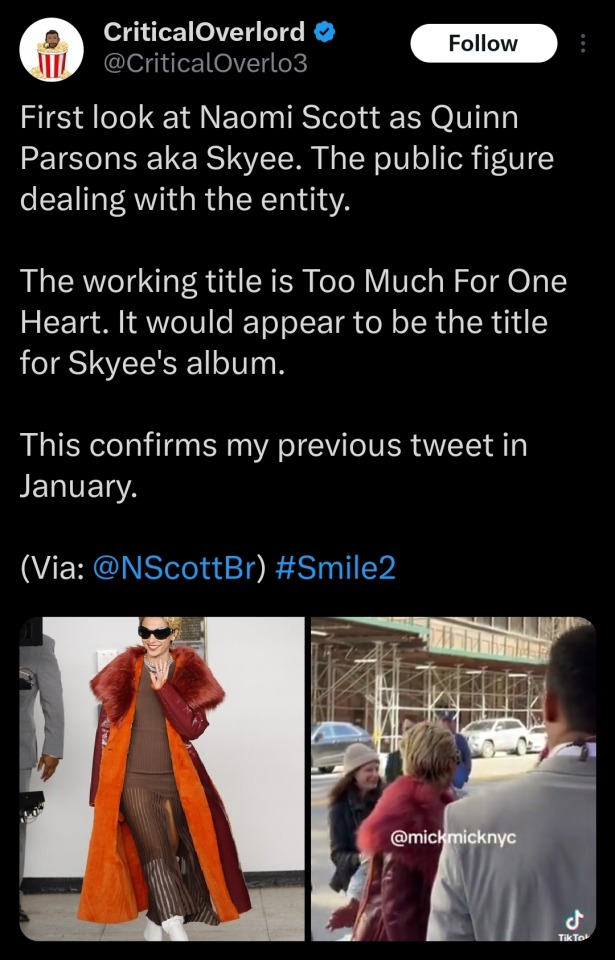
and when the marketing was first beginning they had her name on the casting list as Quinn Parsons/Skye Riley but it got removed after the 2nd trailer released. They were probably doing this so it won't ruin the marketing since they were making it seem she was real and they did announced Naomi was going to be in the movie in December 2023. Also when they first started the marketing they were hiding Naomi's face.
Anyway back to the theory.
I wanted to look back at it because I remember how excited I was when they announced Naomi was going to be in it, and it was going to be about a pop star. I love horror, Naomi, and pop music so I didn’t shut up about it for months.
In the first 13 seconds of the teaser it showed Skye going on stage all excited and at like the last 3 seconds of it it was her looking at all of her fans and I noticed that she was wearing the exact same outfit and had the same hair like in the end of the movie.

same hair and outfit.
After noticing I went on twitter to talk about it and someone said “The entity must’ve controlled her body there when it stuck its hand in her mouth” and I was so surprised because I didn’t think of that.
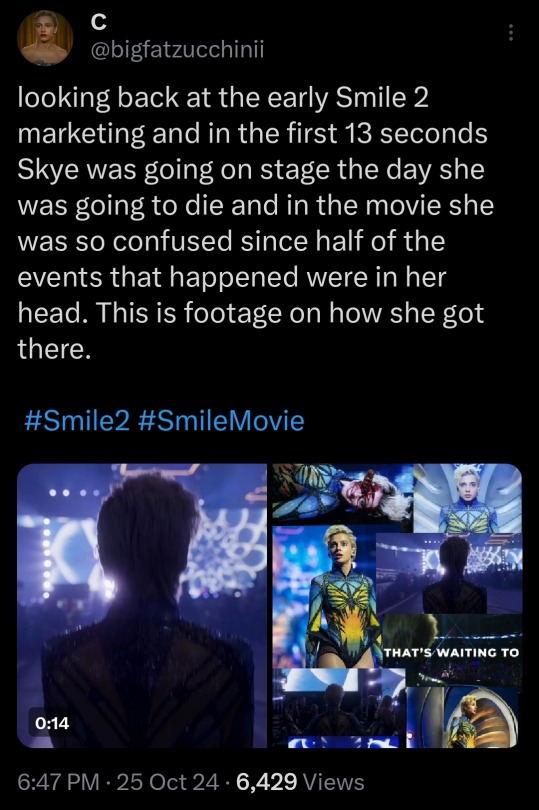
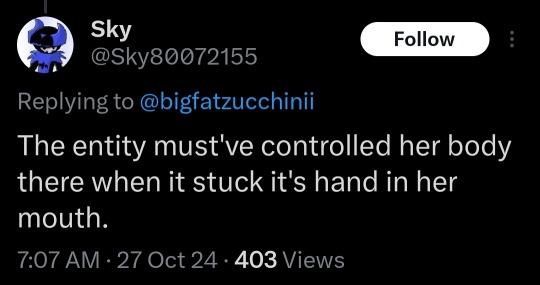
So I also think that it must’ve put a piece of it into Skye and when she woke up in the hospital it must've been the entity acting as Skye like everything was fine and was ready to start the tour.

While the real Skye was probably in some type of coma in her head hallucinating the events in the hospital, car, and at the Pizza Hut, obviously thinking it was all real.
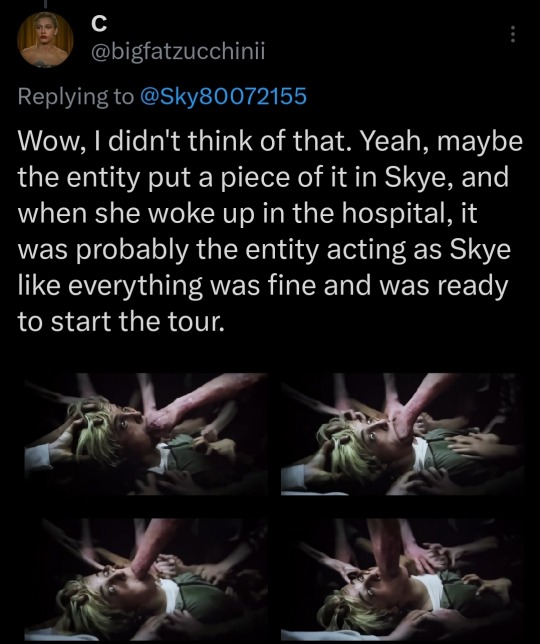

And when the entity closed the doors on her that’s when she woke up.
That is why the entity said "This isn't real, Skye" and "You're not the one in control.... I am".
Now even if that whole thing was real in the Pizza Hut it wouldn’t make any sense because why would her label still make her go on tour after all of that like they probably would’ve moved the dates till Spring and have her take more of a break.
Also her fucking mom turned out to be alive so if that whole thing was real she would've woken up in a real hospital with police asking her what happened and why she kill her mom
and in that part when she put the needle in her neck I don't think the drug was in it and when she was about to pass out it was probably blood loss from her foot or not drinking any water and not eating.
Also, I think when the entity was acting as Skye, it definitely chose the outfit on purpose and was like to her team “You know what, I changed my mind. I want to wear this” just to piss her off and show how 'disgusting' she is to her fans.
This is the theory for now, I would like to hear what you guys think. I would like to make an analysis of this movie, especially one about Skye. Bye
#skye riley#smile 2#smile#horror#I was so excited to share my theory to you guys#naomi scott#horror movies#horror films#fan theory#i miss her#one of the best movies ever#Need a tv series about her#movie theory#horror theory#smile movie#scary movies#pop music
45 notes
·
View notes
Text
This is the gothic irony of Jackson’s fiction: escape is an illusion for her heroines. Merricat destroys every vestige of patriarchal order, yet on that razed ground Constance is still a prisoner, perhaps more narrowly confined than before. Eleanor has already lived through the reality of giving up everything to nurture a dependent; this is the horror Constance faces as well. With more power than Eleanor, Merricat reshapes Blackwood Farm to fit her vision, starting the fire in her father’s room that guts the upper floor and front rooms so that the only livable space is the back kitchen opening out into the garden. Merricat destroys the patriarchal façade of the house, leaving the nurturing, matriarchal space behind. By the novel’s end she physically embodies Jackson’s idea of a picnic: her clothing ruined, she dresses in a checked tablecloth of which her sister Constance says, ‘I believe the one you are wearing now was used for summer breakfasts on the lawn many years ago. Red and white check would never be used in the dining room of course’ (Castle 200). The outfit, then, suggests the same opposition between inside and outside, hellish and heavenly, formal and informal eating that Jackson establishes in Hill House.
Jen Cadwallader, excerpt from “Picnicking at Hill House: Shirley Jackson’s Gothic Vision of Heaven”
33 notes
·
View notes
Text
Looking back, the Purge films are perhaps the most sociopolitically radical movie franchise of all time, an urgent snapshot of history that's as reflective--and in the case of Donald Trump's rise to power, predictive--of our time as any film, regardless of genre. What could've been one-note exploitation fare about people going homicidal for one night a year instead explores the political, racial, psychological, economic, and moral implications of this government-sanctioned anarchy, not so subtly correlating the version of America on-screen with what's going on in the country.
— The Black Guy Dies First: Black Horror Cinema from Fodder to Oscar by Robin R. Means Coleman & Mark H. Harris
#the black guy dies first: black horror cinema from fodder to oscar#robin r. means coleman#mark h. harris#the purge#the purge: anarchy#the purge: election year#the first purge#the forever purge#horror#horror film#horror theory#book quotes#books#Q:
9 notes
·
View notes
Text
The Philosophy of The Uncanny
The uncanny is a concept that lingers at the intersection of familiarity and discomfort, making us question the nature of perception, identity, and reality itself. From eerie dolls and lifelike robots to déjà vu and ghostly apparitions, the uncanny provokes a sense of unease that has fascinated philosophers, psychologists, and artists alike. But what makes something uncanny? And what does this tell us about our understanding of the world?
Freud’s Uncanny: The Return of the Repressed
Sigmund Freud introduced the idea of Das Unheimliche (the uncanny) in his 1919 essay, defining it as something that is both familiar and foreign at the same time, creating cognitive and emotional dissonance. He argued that the uncanny often arises when something long-repressed returns to consciousness, such as childhood fears or hidden anxieties. Freud linked the uncanny to doppelgängers, automatons, and eerie repetitions—phenomena that blur the boundaries between real and unreal, self and other.
Heidegger and the Uncanny as Existential Displacement
Martin Heidegger expanded the uncanny beyond psychology into existential philosophy. For Heidegger, Unheimlichkeit (literally "un-homeliness") describes the fundamental anxiety of human existence. He saw the uncanny as an existential condition, where individuals realize that their sense of self and reality is fragile. This disruption forces them to confront the absurdity of existence and the limits of their own understanding.
The Uncanny in Aesthetics and Horror
The uncanny has played a central role in art, literature, and horror. Gothic fiction, surrealist art, and psychological thrillers often exploit uncanny themes to create tension and unsettle audiences. The concept of the "uncanny valley," proposed by roboticist Masahiro Mori, describes the discomfort humans feel when artificial beings closely resemble humans but fall just short of full realism—leading to an eerie, unsettling effect.
The Uncanny in Modern Society
In an age of deepfakes, artificial intelligence, and virtual reality, the uncanny is more relevant than ever. The increasing difficulty of distinguishing between real and artificial experiences challenges our perception of truth and identity. Social media filters, AI-generated images, and hyper-realistic simulations push the boundaries of the uncanny, forcing us to reconsider what is genuinely human.
Conclusion: Why the Uncanny Matters
The uncanny reveals deep truths about our cognitive and emotional landscape. It exposes the fragility of our perception, the constructed nature of our reality, and the unconscious fears that shape our responses to the world. Whether in philosophy, psychology, or aesthetics, the uncanny continues to challenge and captivate us, reminding us that sometimes, the most unsettling things are not the unknown—but the strangely familiar.
#philosophy#epistemology#knowledge#learning#chatgpt#education#psychology#Uncanny#Psychoanalysis#Phenomenology#Existentialism#Aesthetics#Horror Theory#Heidegger#Freud#Identity and Perception#Uncanny Valley
4 notes
·
View notes
Text
I was rewatching poppy playtime videos and wanted to point out
In RESTRICTED_restoration.mp4 the guy who got turned into Bron gets attacked by a character off screen, all we see of them is their paw
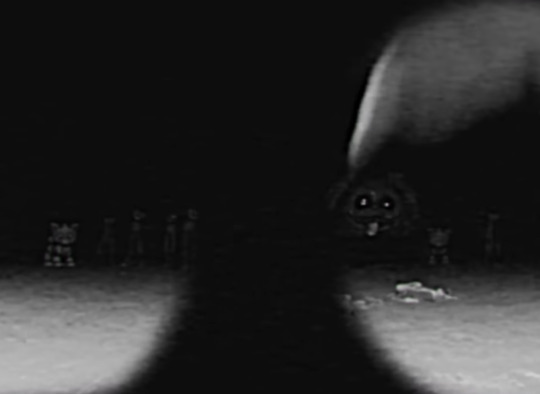
I just realized that this was the first look at the new enemy in chap 3

At the very least the paws are around the same and it’d kinda make sense with the way the toys were acting.
Like if the chap 3 enemy is supposed to be like a leader type it’d make sense that in this system he’d attack first before everyone else descends upon bron.
(Also I think it’s interesting how each boss up to this point is going up in rank, from security guard still doing their job, to caretaker rebelling from their job but still not with the “flock”, now to leader of the flock)
#poppy playtime#poppy playtime theory#playtime poppy#poppy playtime chapter 3#poppy playtime bron#huggy wuggy#poppy playtime huggy#poppy playtime poppy#poppy playtime mommy long legs#horror theory#horror game theory#game theory#mini theory
112 notes
·
View notes
Text

R.H.W. Dillard, "Night of the Living Dead: It's Not Like Just a Wind That's Passing Through," (Horror Films, 1976)
#op#r.h.w. dillard#rhw dillard#richard dillard#george romero#horror#film theory#film criticism#horror criticism#horror theory#horror essay#theory#zombie essay#zombie movie
4 notes
·
View notes
Text
"At first glance, the term 'Tropical Gothic' sounds a lot like an oxymoron, since in popular understanding the genre is often synonymous with its early settings of bleak European wildernesses battered by howling winds and tumultuous storms. In contrast, Tropical Gothic heroes and heroines have vacated traditional eerie castles and chilling wind-swept moors to take up residence in haunted plantation houses, overgrown bayous, mysterious jungles and exuberant tropical cities, where the horrific and the uncanny not only lurk in the shadows but occupy open, sun-drenched spaces alongside humans."
— Anita Lundberg, Katarzyna Ancuta & Agnieszka Stasiewicz-Bieńkowska, "Tropical Gothic: Arts, Humanities and Social Sciences."
Follow Diary of a Philosopher for more quotes!
#quote#quotes#book quotes#monster theory#film theory#gothic#gothic horror#horror#horror theory#gothic horror theory#gothic literature#gothic romance#tropical aesthetic#Tropical Gothic#Carribean#Latin America#latin american literature#literature quote#literature quotes#lit quotes#studyblr#gradblr#LATAM#south america#Southeast Asia#Australia#Deep South#Southern gothic#West Africa#American Deep South
117 notes
·
View notes
Text
LITTLE NIGHTMARES 3 HAS OFFICIALLY BEEN ANNOUNCED!

In 2024, we‘ll be joining Low and Alone on their dangerous journey through the horrific world of the franchise. Are you excited?
Check out the announcement trailer here!
#horror#horror games#horror theory#indie horror#little nightmares#little nightmare mono#little nightmares six#little nightmares 3#little nightmares alone#little nightmares low#little nightmares trailer#mascot horror#indie horror game#amanda the adventurer#fnaf#huggy wuggy#five nights at freddy's#fnaf security breach#bendy and the ink machine#horror arg#indie games#indie#indie game#game#games#video games#welcome home#welcome home arg
193 notes
·
View notes
Text

Martin Rogers "Hibridity and post-human anxiety in 28 Days Later" 2008
#quotes#academia#essays#zombies#28 days later#horror#horror theory#horror studies#monster studies#macks musings#zombie
9 notes
·
View notes
Text
SMILE 2 ENDING THEORY (re-explained)
I'm doing this again because I didn't really like how I did it in my last post. It was very rushed and I was kinda on a time crunch at the time. I think i didn’t really explain it well enough for people to understand, i mean there are probably some of you that did but looking back in my eyes it just looks like shit and not properly explained. I posted it on my second IG account where I now post some theories and updates on other stuff and since IG has a word limit I couldn’t explain a lot more of it and just used that to put it on here and add a little more but it just wasn’t enough for me at least. (Edit: I don't have the account anymore lmao)
So here is the theory properly explained.

A recap of what happened after Skye was chased by her backup dancers.










A few days after watching the movie in theaters I was looking back at the first teaser Interscope Records released to promote Skye’s song ‘Blood On White Satin’ released on June 14, 2024.
This was when Smile 2 was doing a secret marketing campaign to seem like Skye was a real person and it did work by making a fan account with the user ‘skyerileynation’, putting up billboards in LA and the UK with a QR code, pop culture accounts teasing her new era, another video about Skye, and having the character’s name be Quinn Parsons on the IMDB page and the casting list for the movie until the 2nd trailer released.
And they were hiding Naomi’s face so it wouldn’t ruin the marketing. Of course there were a lot of people thinking she was real.






I was looking back at it because I remember how excited I was when they said it was going to be a pop star getting the curse and she was going to be played by Naomi Scott. I love horror, pop music, and Naomi so I didn’t shut up about it for months.
Here’s the teaser.
youtube
In the teaser you can see Skye going to stage excited, obviously you can’t see her due to not ruining who she looks like but by body movement. And in the rest of the video it’s her performing the song on stage with a different outfit, showing small clips of the movie, and 2 clips of Skye facing the other way.
Now here’s the theory.
After watching the teaser again I noticed in the first 10 seconds she was wearing the exact same outfit she didn’t want to wear because it showed her scar.
I didn’t think too much of it until in the last 3 seconds of it it was her on stage looking at her fans. I quickly went back to the beginning and noticed she had the exact same hair from the end of the movie and realised it was the day of her official comeback.
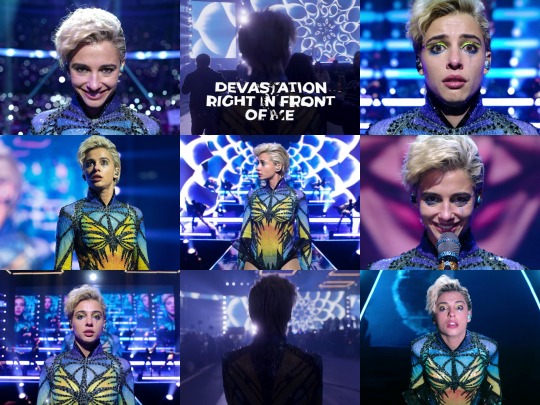
I went to talk about it on twitter and said that is kinda footage of how she got there, but how exactly it was still confusing for me and a lot of people because how the hell did she go through all of that and her label still made her go on tour?????
That’s when someone replied with “The entity must’ve controlled her body there when it stuck its hand in her mouth”.


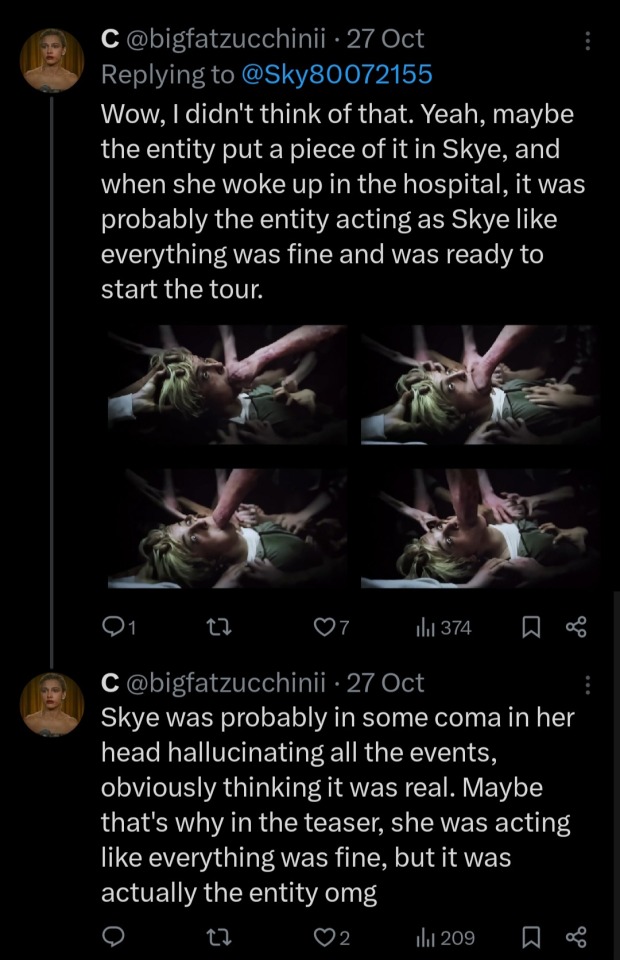
I was so surprised when I saw that because I didn’t think of that and I just thought when it put its hand in her mouth just to traumatize her or just put her to sleep.
So I also thought that it must have put a piece of it in her and when she woke up in the private clinic it wasn’t her it was the entity acting as her. Let me explain:
I think after she said “I wish you could feel what it's like to live inside my head” to her mom, some type of switch happened after the entity possessed her mom.
The real Skye was put in some type of coma in her head, obviously hallucinating the clinic, car, and the pizza hut. And the fake Skye who is being controlled by the entity apologized to Elizabeth, apologized to everyone on her team and was ready to start the tour.
And when the entity closed the doors on her and when they opened again that is when she woke up. That is why the entity said “This isn’t real, Skye” and “You’re not in control, Skye…. I am”.
So basically what I am saying is that in the first teaser they released showing Skye going on stage all happy it wasn’t her, it was the entity possessing her body all excited to curse thousands of people in the crowd.
While the real Skye was sent into some coma and woke up when she got on stage.



It was not kidding when it said “i like wearing your skin”.
If this was ever to be true by Parker Finn it would make this movie a thousand times better because it really shows how powerful the entity is and what other crazier things it can do in the 3rd movie.
So did they basically had the ending in front of our faces? Yes. Was the ending pretty predictable when they said it was going to be a pop star getting it? Yes. BUT the way Parker Finn did it made it SO FUCKING GOOD I CANT LIE.
(Also I think when Skye stabbed herself with the needle in her neck, I don’t think the drug was in there, it looked empty to me. And when she was about to faint it was probably blood loss from her foot or not eating and drinking water. Throughout the whole movie she did not eat once and that was probably because of Lewis’ death because of how gross it was or after the car crash she started not eating much.)
One more thing I want to share that doesn't really have nothing to do with this but someone in the comments on the first post of this theory thought I didn't get the whole thing of the entity and the movie even though I do. Like this is just something cool i wanted to share that is all. not everybody is going to get it when they first watch something like this that is why there are explanations videos.
This is it for now. I will update if Parker says anything about the ending in some interview or in any or the special features they will release. I would love to hear what you guys think about this. Thank you for reading this thread.
#smile 2#smile#smile movie#skye riley#horror#horror movies#horror theory#horror film#psychological horror#movie theory#fan theory
21 notes
·
View notes
Text
More often than not, the kitchen has been designated as a feminine space. Kitchen appliances, in turn, are often seen as extensions of the female body to which a range of temperatures and climatic conditions (ice cold, frigid, smoking hot, wet, dry, etc.) are disproportionately attributed. The colloquial expression for pregnancy “to have a bun in the oven,” though not complimentary insofar as it equates a pregnant woman with a household appliance, provides a telling example of a long-standing link between procreation, gestation, and kitchen technology. The phrase imagines the womb as an oven and, by the same logic, the oven as a womb, similar to “The Gingerbread Man” and other folktales of high-carb homunculi cooked up by women in the kitchen. Andrzej Zulawski’s Possession (1981), “a fairytale for grown-ups” according to the director, falls within that tradition, although instead of a bun in the oven, the story features a body in the refrigerator, and instead of piping-hot runaway baked goods, the woman of the house prepares a tentacular, glutinous golem through a miscarriage of groceries and bodily secretions expelled in the tunnels of the Berlin U-Bahn during an ecstatic trance. The aberrant offspring of a body in crisis disrupts a marriage, an affair, and two kitchens. When considered in relation to perishable food distribution, refrigerator-related household duties, and the desire of a woman to say “I” for herself, the miscarriage-birth emerges as an abject expression of identities both human and nonhuman, of a woman who runs hot and cold, and of refrigerators and their unspeakable contents.
Marc Oliver, excerpt from Household Horror: Cinematic Fear and the Secret Life of Everyday Objects
39 notes
·
View notes
Text
Black horror's triumph is its ability to reflect more deeply on the ways in which Black history has been and continues to be Black horror. Black horror points a finger at evil because those who forget the past are doomed to repeat it, just like those who forget the rules of horror are just plain doomed. When the twenty-four hour news cycle moves on to some Insta-influencer, and names like Breonna Taylor, George Floyd, Atatiana Jefferson, and Botham Jean become fading memories for some, Black horror steps up to remind us that, like the vengeful dolls in Tales from the Hood, the past is never 'history.'
— The Black Guy Dies First: Black Horror Cinema from Fodder to Oscar by Robin R. Means Coleman & Mark H. Harris
#the black guy dies first: black horror cinema from fodder to oscar#robin r. means coleman#mark h. harris#black horror#horror theory#horror#horror film#book quotes#books#Q:
2 notes
·
View notes
Text

kiss the creature into me please
5 notes
·
View notes